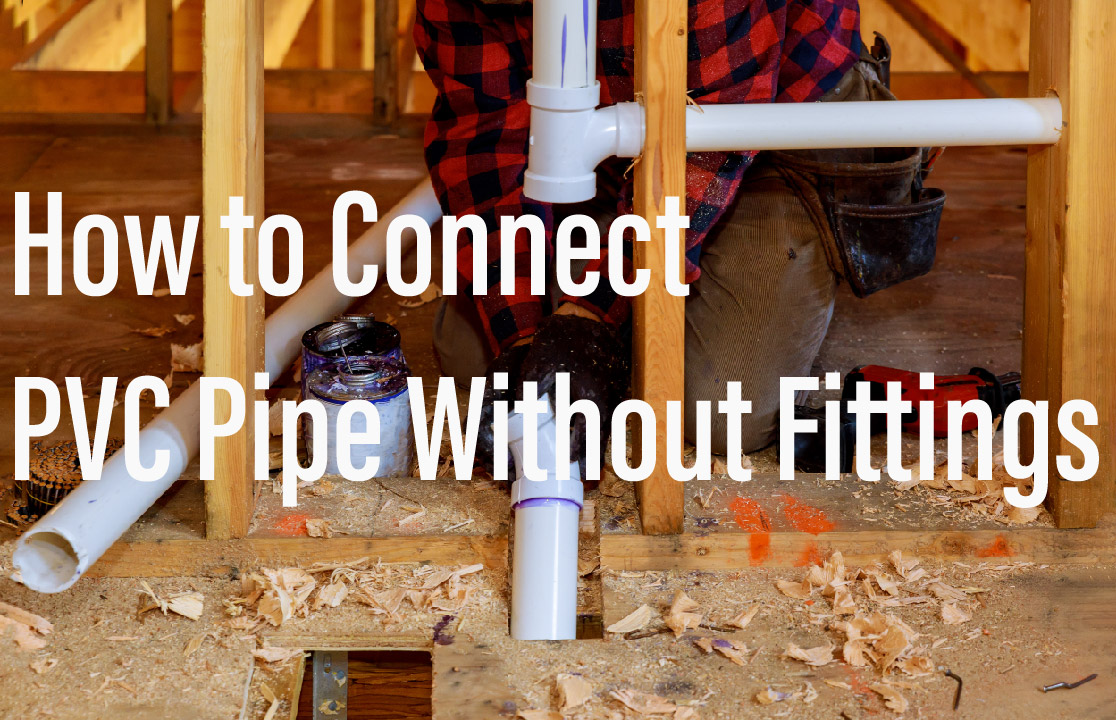How to Connect PVC Pipe Without Fittings
Feb 13th 2023
Inexpensive, durable, and easy to work with, PVC pipes are used for all kinds of applications, from plumbing for homes and commercial buildings to water lines for irrigating gardens and farms. These affordable plastic pipes can even be used to fashion homemade greenhouses and other kinds of shelters, where they provide a framework for plastic coverings.
Making the Connection
When you are connecting one piece of PVC piping to another, it's best to attach them with PVC fittings. These fittings will provide a secure, stable connection, which is particularly important if you are using the pipes to transport water, such as when these pipes are used for drip irrigation. In addition, should you need to make a repair or upgrade to your system, it will be easier to detach pipes if you have connected them with fittings.
Unfortunately, there may be times when you find yourself without fittings. Perhaps you are in a remote location and can't afford the time or expense to go in search of fittings. Maybe it is a holiday or other time when your local stores are closed. It could be you have to make an emergency repair as fast as possible and can't afford the time it takes to drive to the nearest store.
Fitting Alternatives
Fortunately, there are alternatives to using fittings to connect PVC piping. Even so, as mentioned earlier, fittings usually provide the most secure and stable connections, so you should consider these ideas just as emergency or temporary measures. Read on to learn how to connect PVC pipe without fittings.
The most effective way to make a connection without fittings is to use a PVC cement like PVC Cement. Other glues and adhesives may work, but you should read their labels first to make sure they are formulated for use on PVC.
Making the Cut
The first step in connecting the pipes is to cut each end as smoothly, evenly, and squarely as possible. A clean cut will help ensure the best bonding. You can use tub cutters or pipe cutters specially designed for working with PVC pipe. If you don't have one of those tools on hand, a saw should work, provided you are careful. Avoid using hacksaws, which tend to make uneven cuts.
Once you have made your even cuts, it's time for some sanding. Sanding the edges will help ensure as snug a fit as possible between the two pipes. Use 80-grit sandpaper to remove all uneven spots. After you have sanded, use a cloth to wipe away any dust for a clean connection.
Before you apply the glue or cement, mark each pipe if you want to place each one in a certain orientation. Most of these glues dry very quickly, so you will not have much time to adjust them after you press them together.
Now spread an even coat of glue or cement on the ends of both pipes. Press them together with the marks about a quarter turn from each other. Twisting the pipes, a quarter turn so the markings line up will help spread the glue for an even, solid connection.
One major drawback of the glue/cement method is that it can be very difficult to disconnect the pipes after you have stuck them together. This stuff is strong.
There are a couple of alternatives, although they will not be as a watertight as the cement method. First drill a hole through each pipe. Then connect them with a pin or a screw. This can be a good temporary fix for a homemade greenhouse or other shelter.

